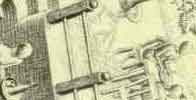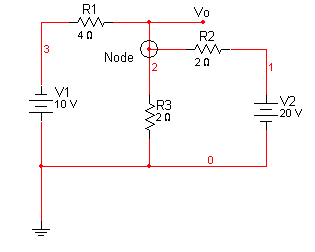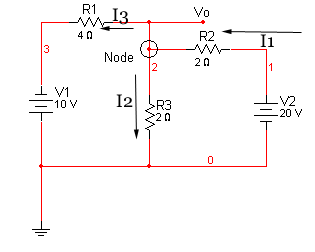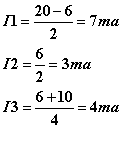
|
Main Electronics Circuits Circuit Math Smith Charts Pictures Arizona Scenic
Colorado
Life In Jersey |
 |
 |
 |
Let's start with Nodal since you will be working with it the most. I don't know if I'll cover Mesh, or Superposition, and all the other lovely ones just yet. Thevanin and Norton will be covered in thier own section. So here we have a basic circuit with two power supplies.  I circled the node we want to find for since we are looking for Vo (voltage out) and this node is the same as Vo. Note the polarity on the voltage sources, V1 is reversed from what is usually drawn. Remember Kirchoff's laws: So how do we handle this? We go back to Ohm's Law:  and write equations for each segment. Let's start by breaking it up into segments like this:   Which gives us  And here's how... I1 is equal to the supply voltage of: 20 volts subtract Vo (our node).
We have our supply voltage (20 - Vo) and this has to be divided by the resistance in order to get the current. So I1 equals  Since I1 is equal to I2 + I3 we have to write the equations for both now. I2 is only Vo divided by the resistance R3  Noting the reversed polarity of V1 we have to add it to Vo, and then divide it by R1  Now that we know how we came up with this equation  let's simplify it. First multiply by 4 to eliminate the denominator, then combine  Excellent! From here we can get the current in any node  Read through this a few times to make sure you understand it. I'll give another example shortly, but you will be tested on it. Now lets play with Capacitors and Resistors Circuit Refresher | Series Resistors | Parallel Resistors | Nodal Analysis | Capacitors And Resistors | |
|||
Copyright © 1999-2003 Jarg Dot Org
|
